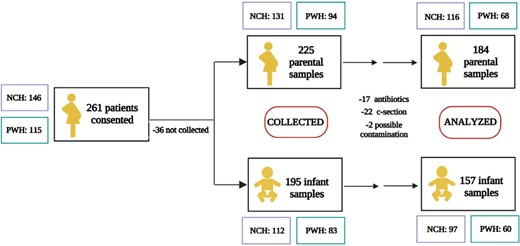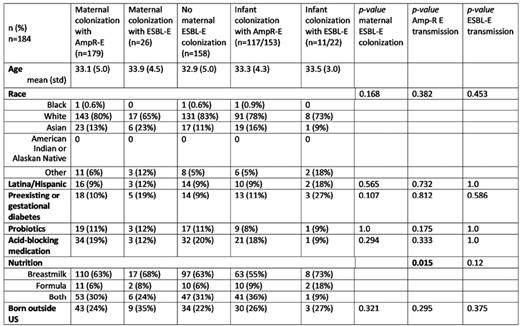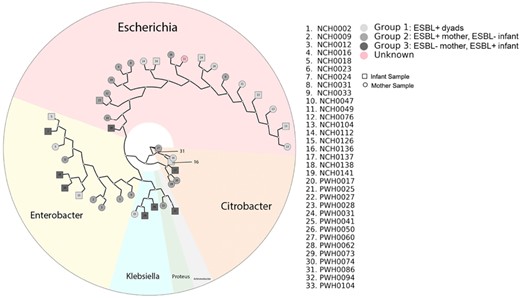-
PDF
- Split View
-
Views
-
Cite
Cite
Leena B Mithal, Alima Sajwani, Abigail Aaron, Aspen N Kremer, Erica Hartmann, Jack Sumner, Andrew Watson, Emily Miller, Mehreen Arshad, 96. Maternal Colonization, Perinatal Exposure, and Neonatal Acquisition of Resistant Enterobacterales, Open Forum Infectious Diseases, Volume 10, Issue Supplement_2, December 2023, ofad500.012, https://doi.org/10.1093/ofid/ofad500.012
Close - Share Icon Share
Abstract
Extended Spectrum Beta-Lactamase producing Enterobacterales (ESBL-E) are globally prevalent. Pregnant people colonized with ESBL-E are at risk of perinatally transmitting to neonates, in whom infections with these strains are associated with higher mortality, morbidity and health care costs. In this study, we aimed to estimate the rate of gut colonization of AmpR-E (ampicillin resistant Enterobacterales) and ESBL-E in a population of healthy parent-infant dyads in the Chicago area and investigate the genetic characteristics of ESBL-E.

Northwest Community Hospital (NCH), Northwestern Medicine Prentice Women’s Hospital (PWH). Final “n” for analysis was 184 parental and 157 infant samples. Infant samples were collected during hospital admission (1-2 days of life) and/or at 7-10 days of life.


Characteristics of Mother-Infant Dyads by Colonization and Perinatal Transmission.

Whole genome sequencing of the ESBL Enterobacterales isolates.
Group number is indicated by grayscale color as indicated in legend. WGS showed that 45% were E. coli (19/42), followed by Enterobacter (11), Citrobacter (7), and Klebsiella (3).
This study is the first of its kind in U.S. The burden of ESBL-E colonization in pregnant people is significantly higher than other developed countries (e.g., Norway, 2.9%) and comparable to countries with a high burden of ESBL-E (e.g., Sri Lanka, 17%) The impact of breastfeeding on infant colonization may be through mediation of microbiome but requires further study. ESBL E. coli are adept in perinatal transmission.
All Authors: No reported disclosures
Author notes
Session: 33. Pediatric Bacterial Infections
Thursday, October 12, 2023: 10:45 AM
- ampicillin
- antibiotics
- pregnancy
- ceftriaxone
- fever
- beta-lactamase
- breast feeding
- cesarean section
- citrobacter
- color
- developed countries
- disclosure
- enterobacter
- feces
- health care costs
- hospitals, community
- infant
- newborn
- neonatal intensive care units
- klebsiella
- labor
- mothers
- norway
- parent
- pregnancy trimester, third
- sri lanka
- infections
- genetics
- morbidity
- mortality
- science of nutrition
- vagina
- premature birth
- perinatal period
- extended-spectrum beta lactamases
- microbial colonization
- hospital admission
- rectal swab
- microbiome
- stool specimen
- maternal transmission
- whole genome sequencing
- data analysis





Comments